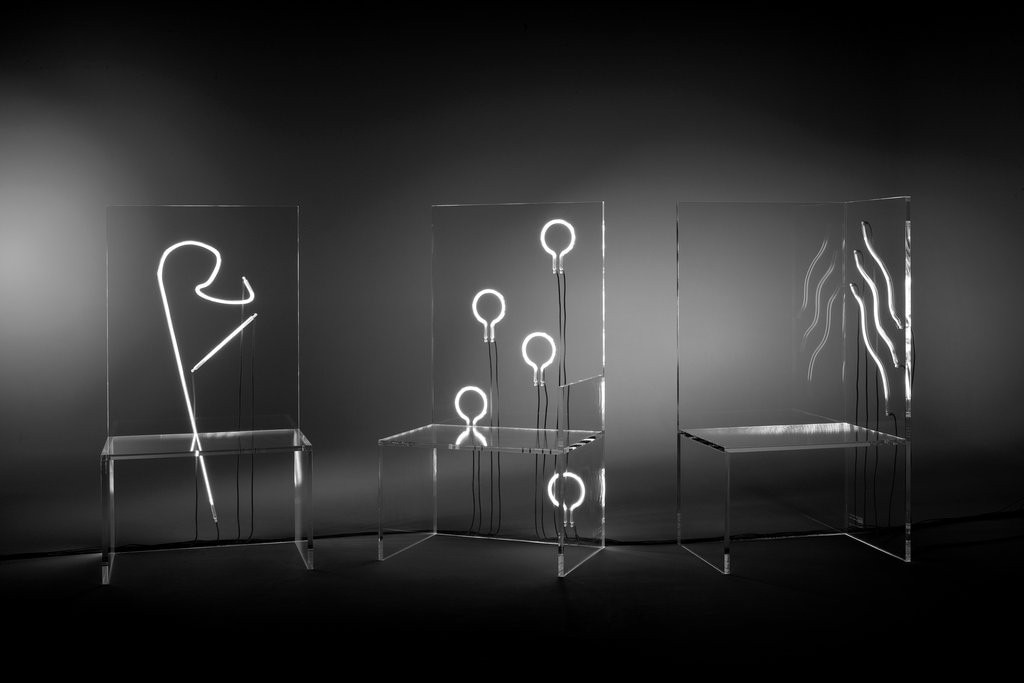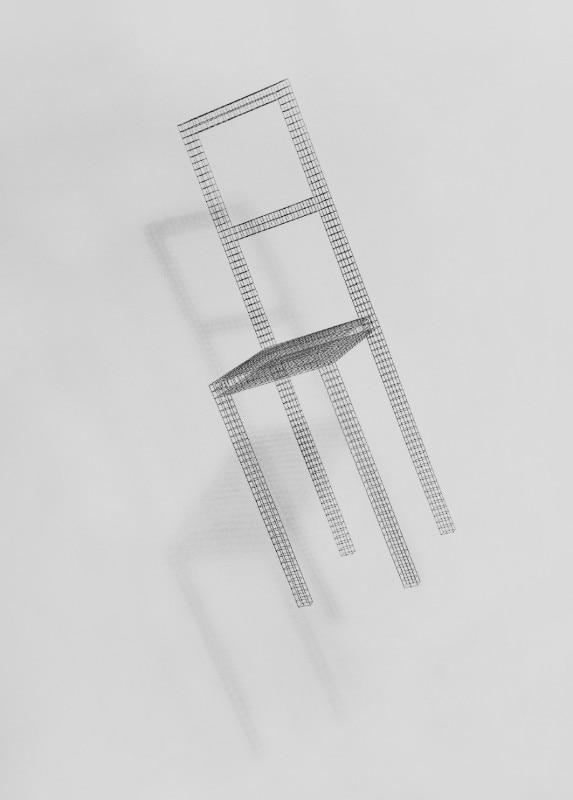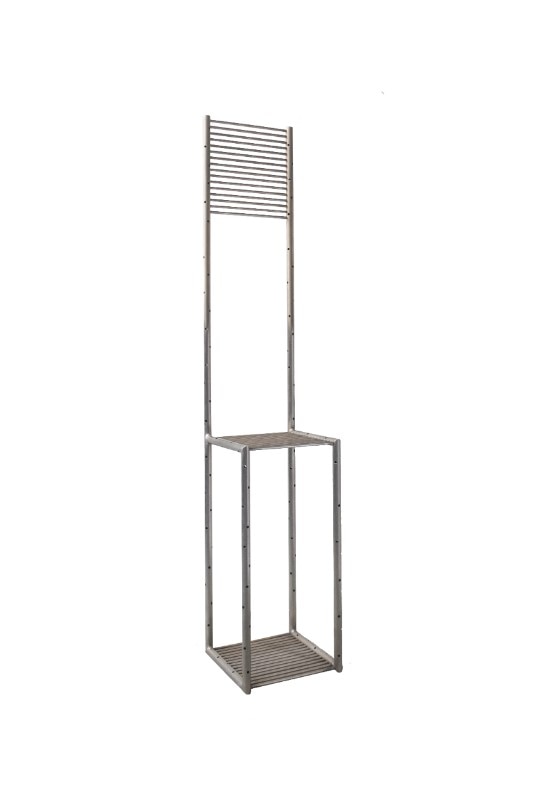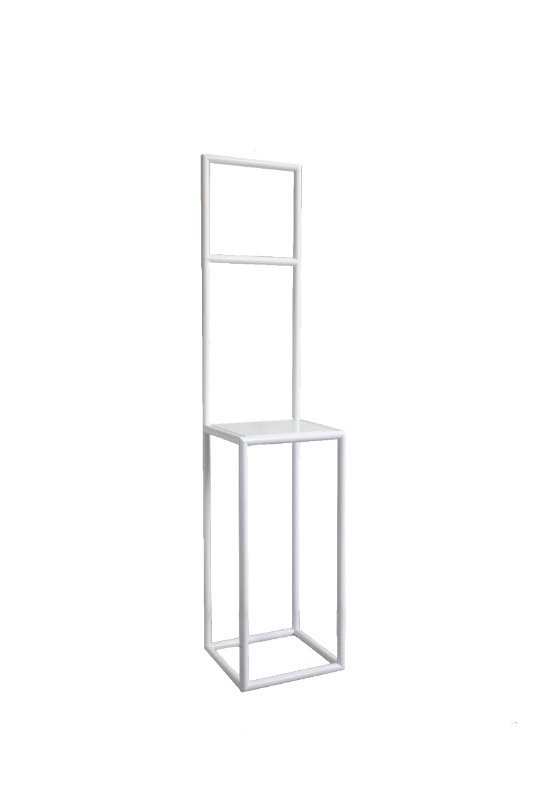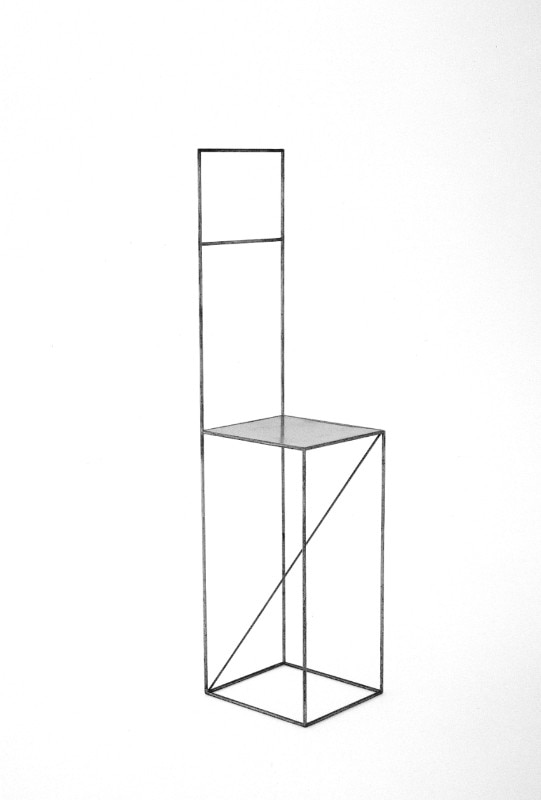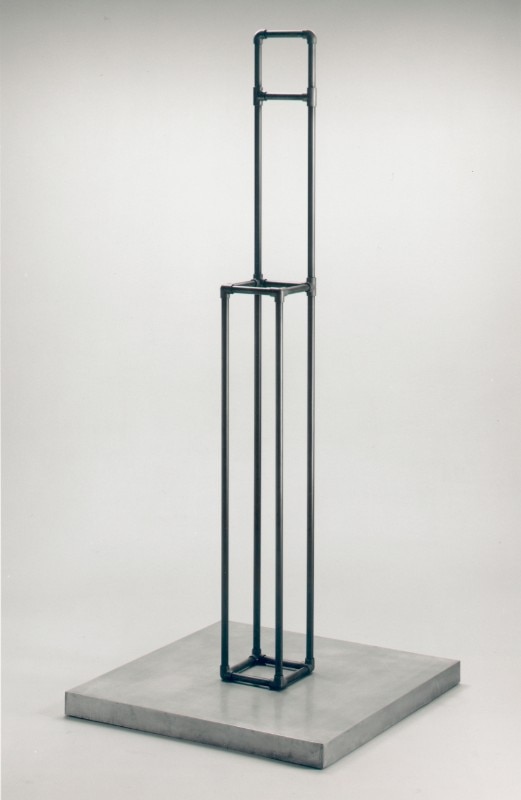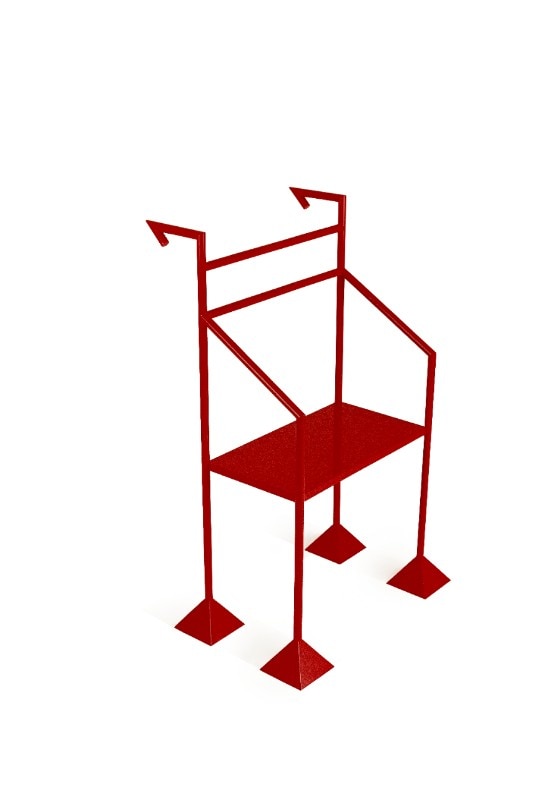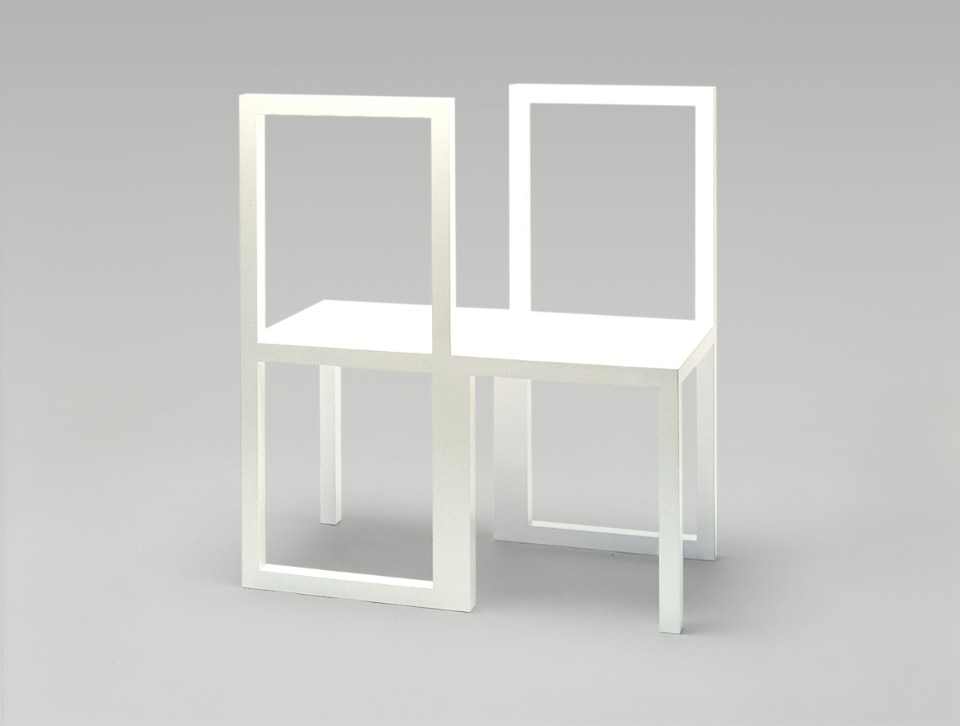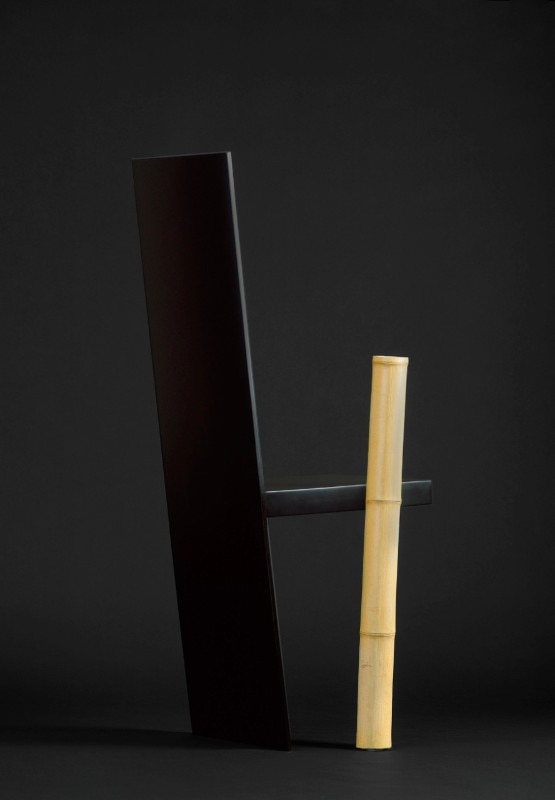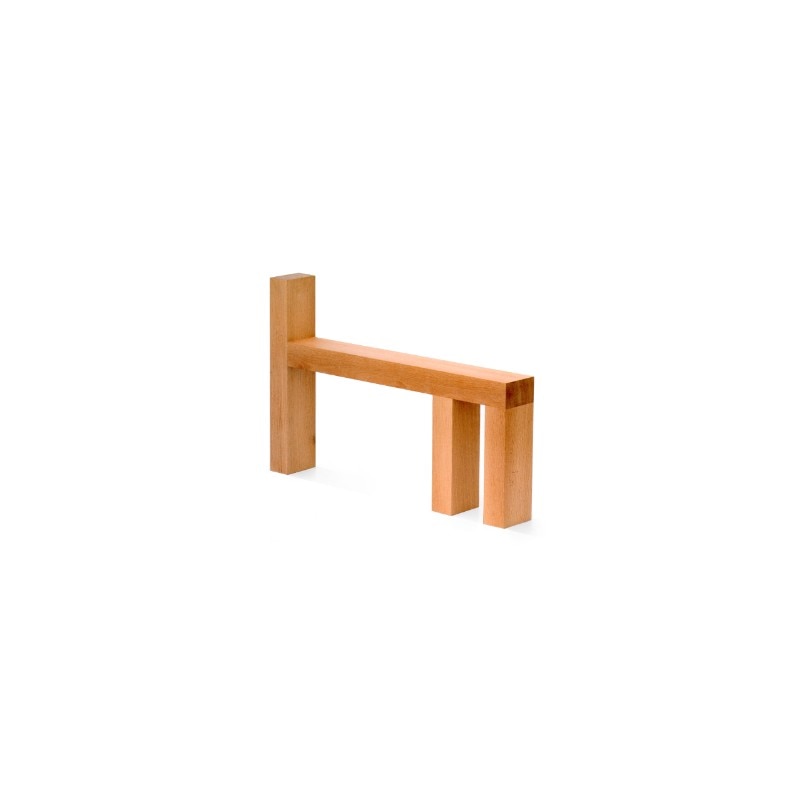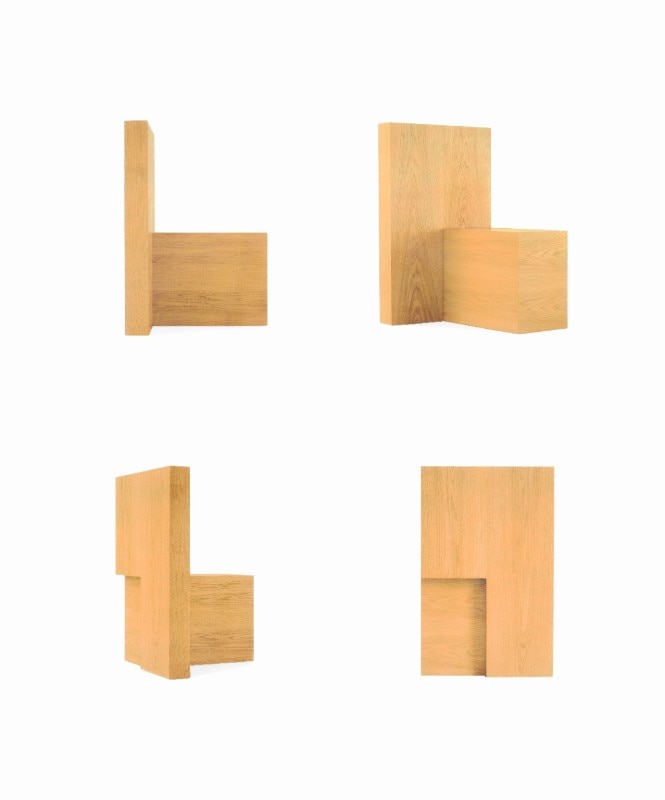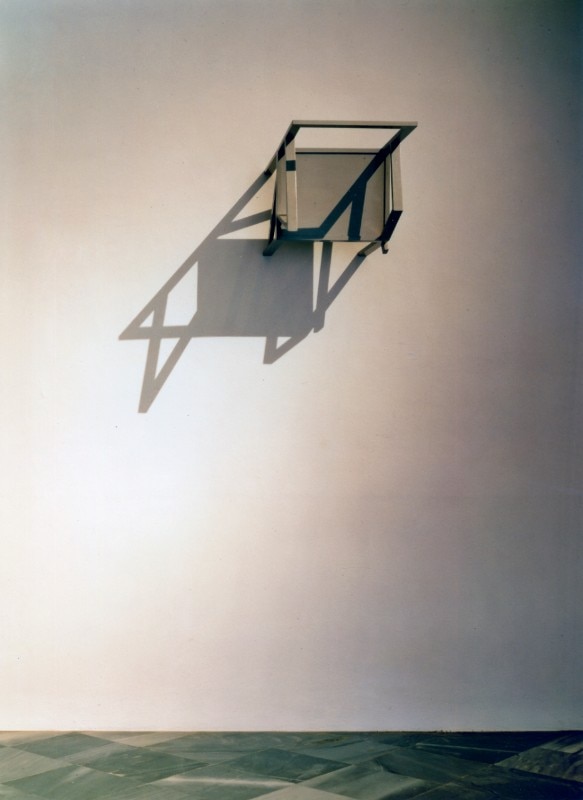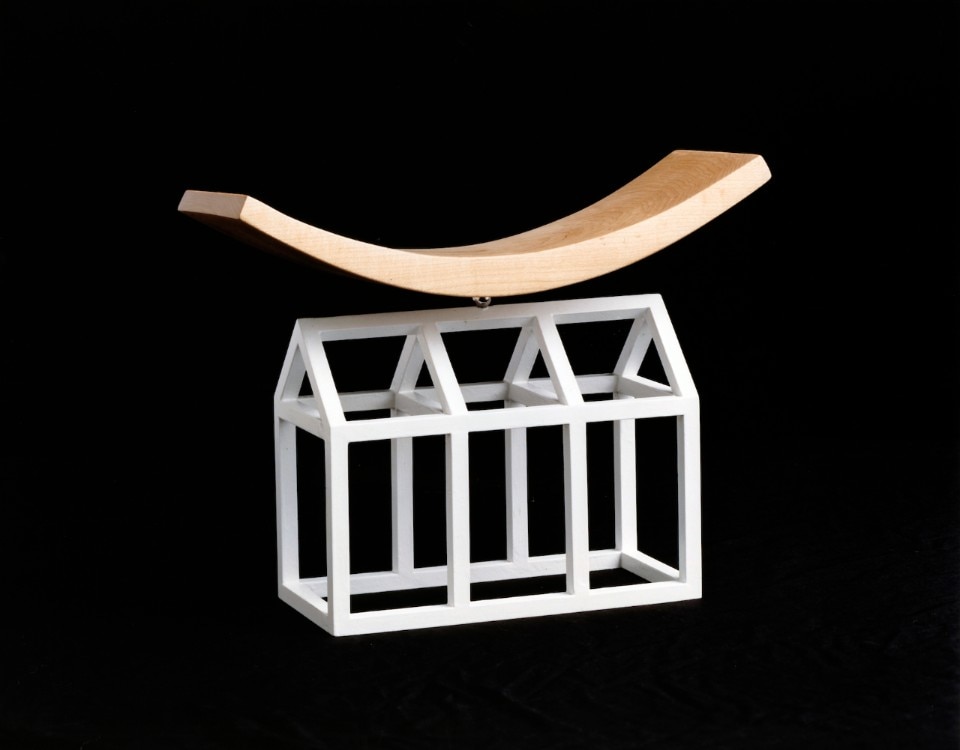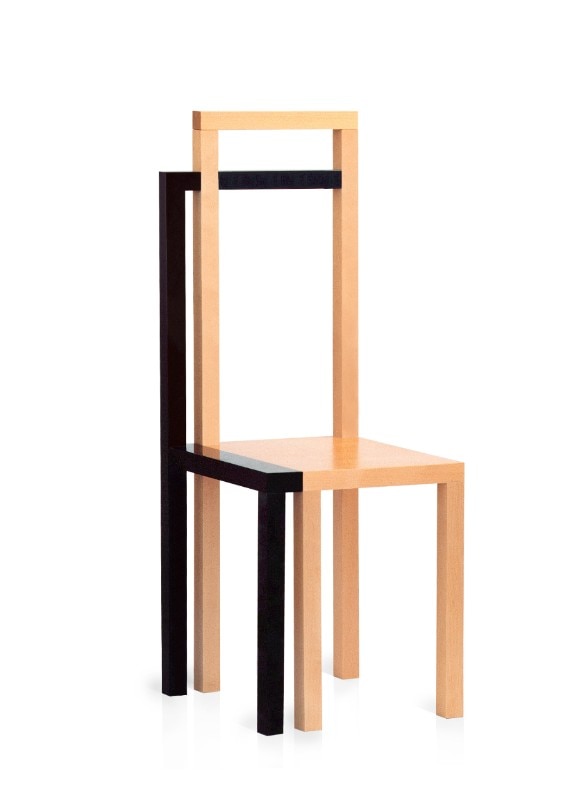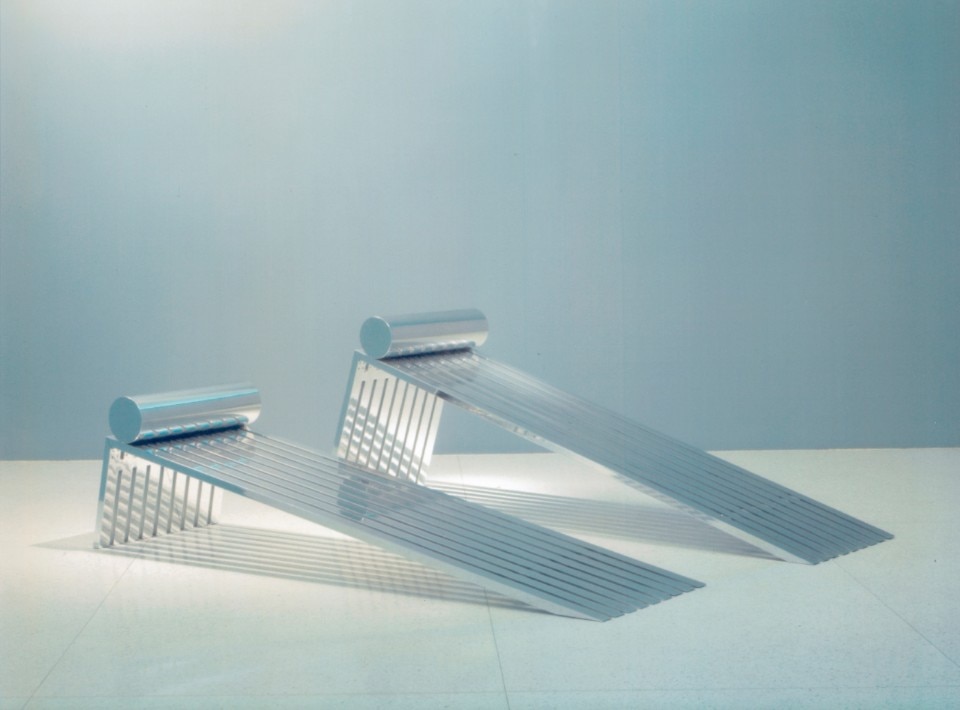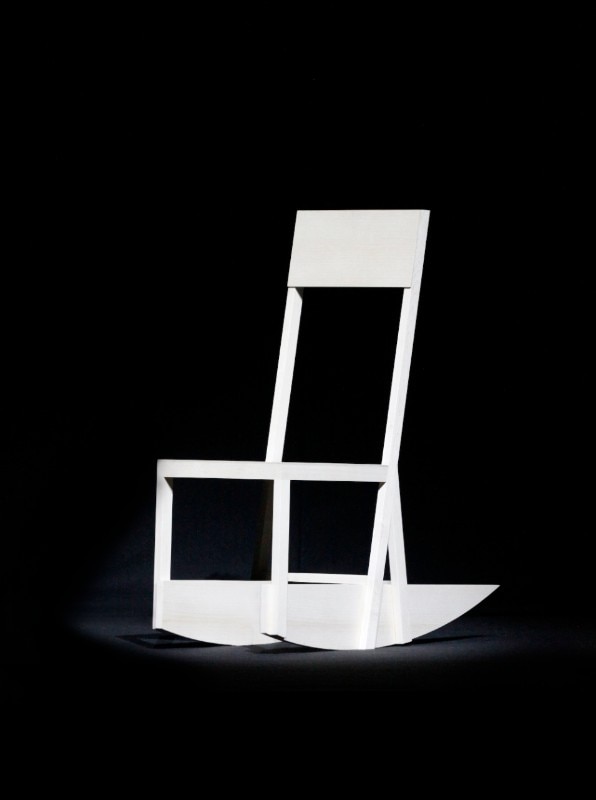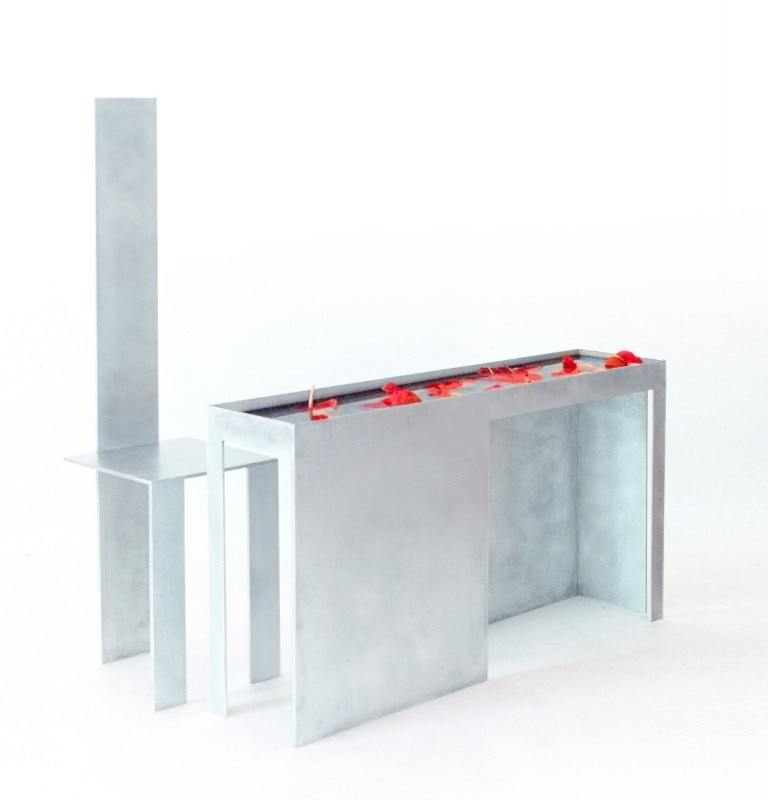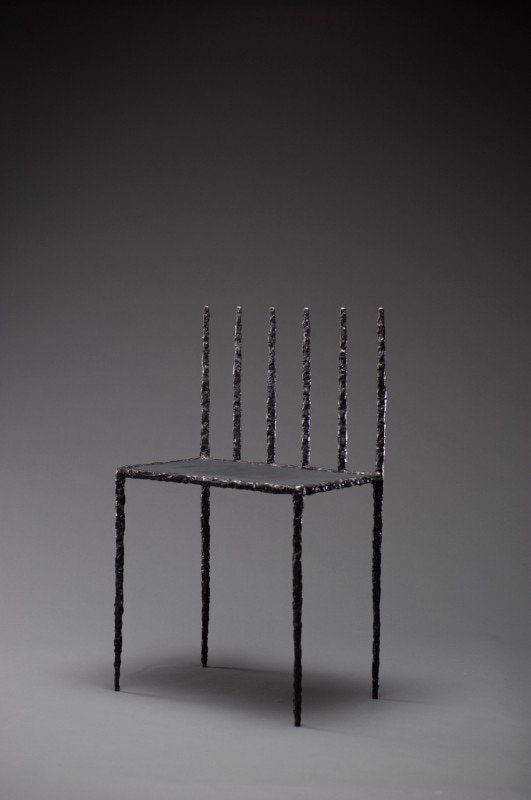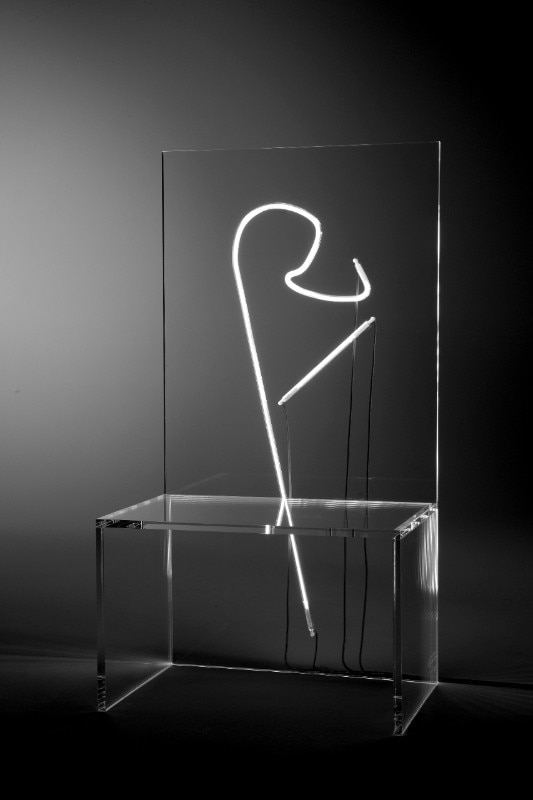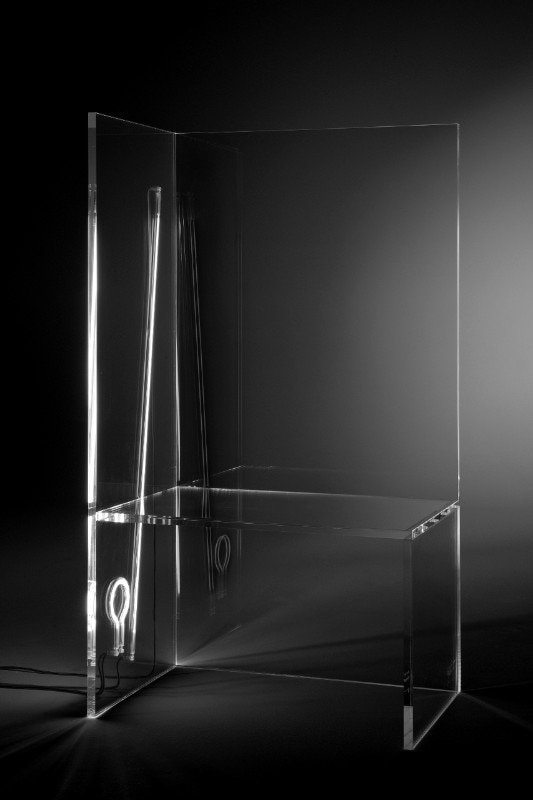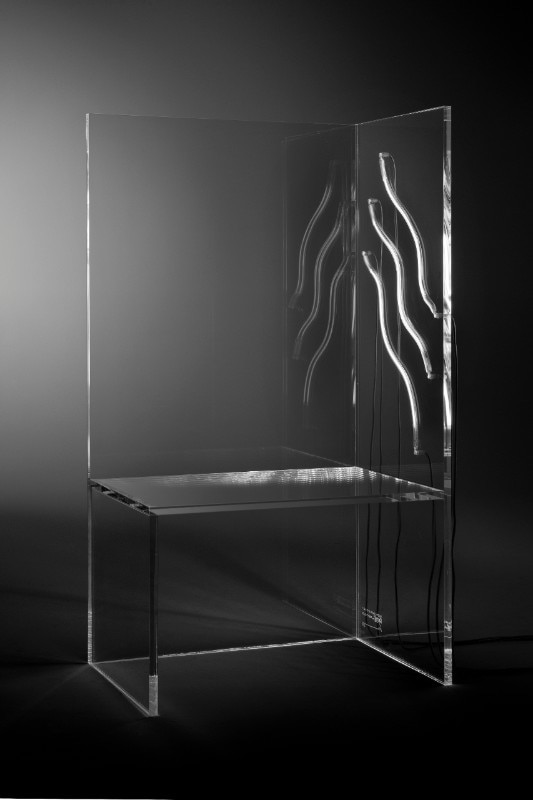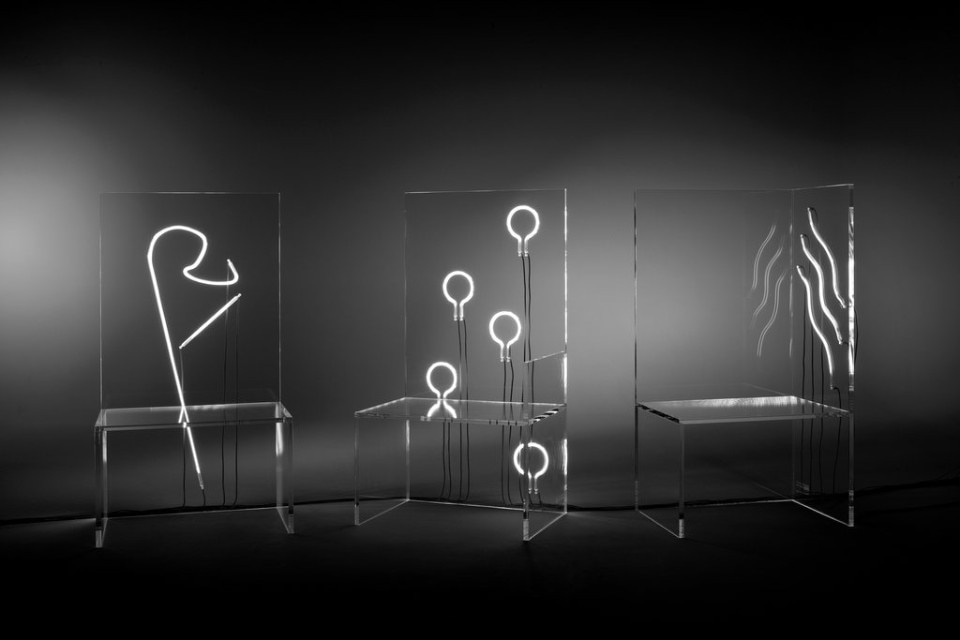This article was originally published in Domus 1048, June 2020.
Robert Wilson’s chairs are furniture pieces, sculptures, icons, stage props, storytellers, characters, and in all these roles, are part of an artistic Gesamtkunstwerk.
Their existence affects and changes the world around them. Like everything he designs, they cross disciplinary boundaries, function in multiple ways, and leave room for personal interpretation.
Chairs are an integral part of the theatre director’s work and contribute to the mesmerising beauty of his ever-evolving oeuvre. My favourite example is the Chair with its Shadow (Freud Hanging Chair), which originated out of a happy accident. When
Bob wasn’t satisfied with the upright proportion of an early prototype, an assistant taped a shorter and wider silhouette to its left side. He saw this improvised improvement and fell in love with it. As a result, the final chair got six legs and an un- expectedly comfortable seat.
Even though his chairs are static objects, they are always on the move. Once a new object (or a person whose physical presence is treated equally) enters the stage or a space, tensions build up, dialogues occur.
The original occupants react until the balance in the constellation is restored once again, just to be slowly pushed or pulled away anew moments later. This constant play is also one of the fundamental principles of The Watermill Center, the laboratory for the arts and humanities with residencies and workshops that Robert Wilson founded in 1990 on Long Island, New York. After studying architecture at Pratt Institute in the 1960s Bob Wilson worked with Paolo Soleri planning his visionary town Arcosanti.
Christian Wassmann is a New York-based Swiss architect and designer who frequently collaborated with Robert Wilson between 1997 to 2007.
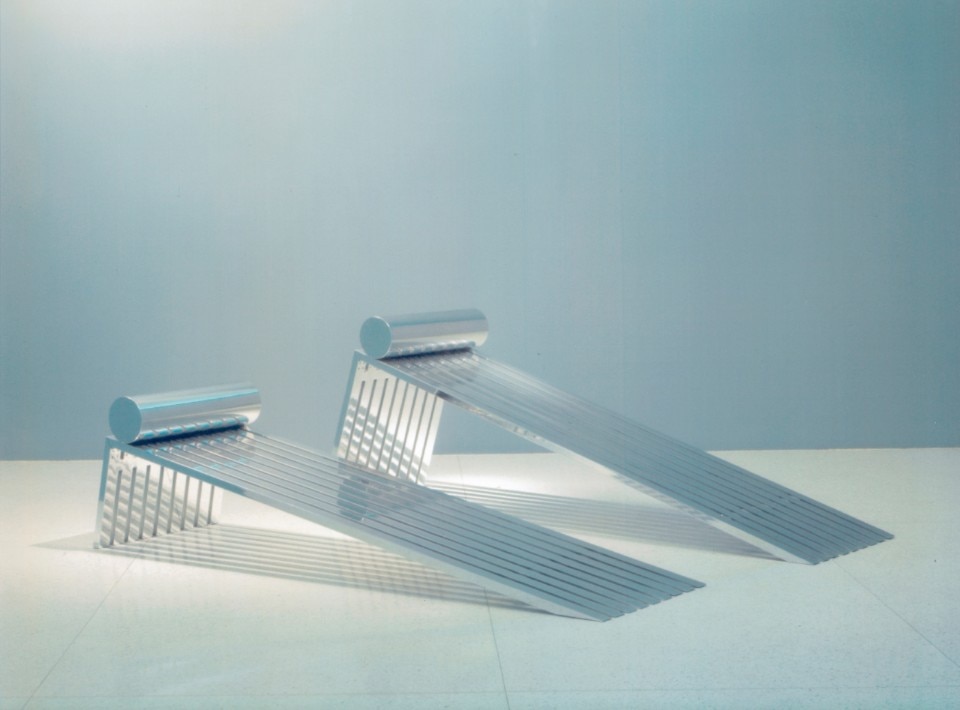
When I was 11 years old, I went for Thanksgiving to my Uncle Sherod’s house in Alamogordo, New Mexico. He lived as a recluse in the White Sands Desert in a white adobe house that he built himself. It was a simple house with a floor and walls of mud and a beam and mud ceiling.
There were very few items placed in each room. One room of Native American ceramic jars and pots. Another room with a mattress and Navajo blanket on top. But the most impressive room was a room that had a single chair. It was a thin, small, rather high-backed wooden chair, the origins of which are unknown, but it was probably built by someone living in New Mexico. It was no more than 40 centimetres wide, and approximately 1.4 metres high.
I said to my uncle Sherod: “That’s a very beautiful chair,” and the following Christmas, he sent it to me as a Christmas present. This was a highly unusual Christmas gift for a boy from Central Texas. Normally I got a shotgun or red flannel chequered shirt, none of which I liked. Six years later, my cousin John wrote me a letter and said that his father gave me a chair, and it was his, and he wanted it back, and I sent it to him in California, and that was the beginning of my interest in chairs.
Marcel Breuer said: “In the detail of this chair are all my aesthetics. The same aesthetics as when I design a building, or a city are inherent in the detail of the chair.”
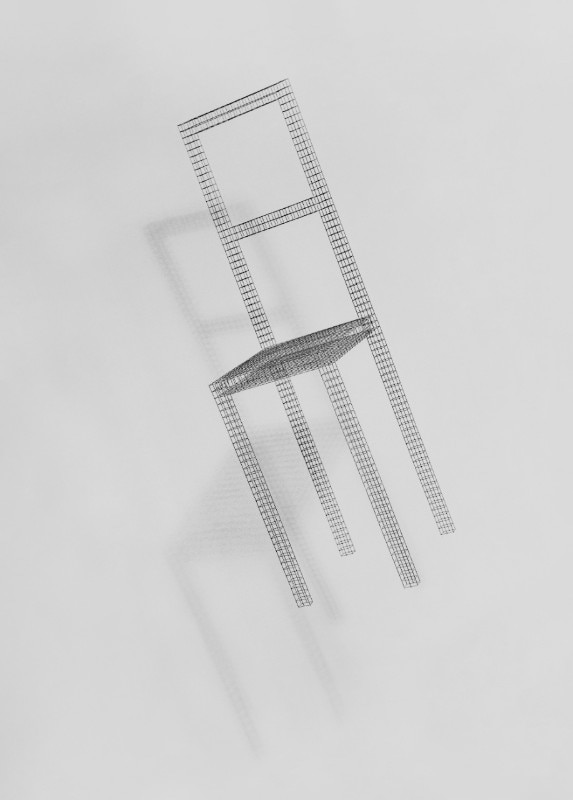
Bertolt Brecht wanted an epic theatre where all elements were equally important. A gesture, a text spoken or printed, a chair, were all integral and equally important in what he called an epic theatre. The chairs in my productions are not thought of as stage props but can be seen on their own as sculpture. Since the beginning of my career in the theatre, I have very often had a chair as an integral element in my productions. One of the earliest plays in 1969 was The Life and Times of Sigmund Freud.
For that production, I designed a hanging chair. The Freud play was in three acts, and the chair was lowered throughout the three acts, from the top of the proscenium in the first act, to the last act, where it landed on the floor. It was a kind of timepiece to measure the length of the play.
The chairs in my productions can be seen on their own as sculpture
From this chair I designed a sculpture, the Freud Hanging Chair, made of square wire mesh. It is hung diagonally and lit with one source of light, which casts a shadow on a nearby wall. When seen from a certain distance it is not distinguishable whether one sees the chair or the shadow. They are all lines in space.
Some of the chairs I have designed to me represent gods of our time: Freud, Einstein, Stalin, Queen Victoria, Marie Curie. Just as the Greek playwrights wrote about gods of their time. Often the chairs are non-functional. They are something one can look at abstractly as a sculpture. They can stand on their own independently from a stage production.
Gertrude Stein said, when asked what she thought of modern art: “I like to look at it.” I never thought of theatre design as decoration, but as something architectural.


